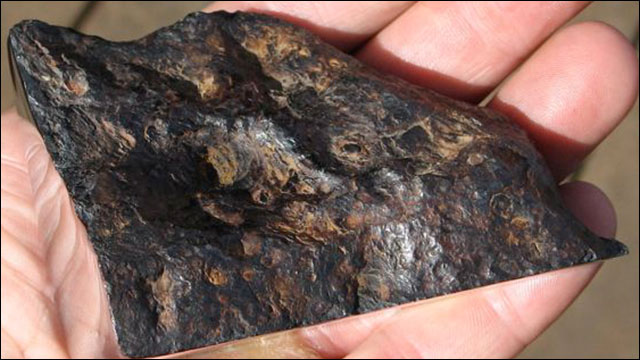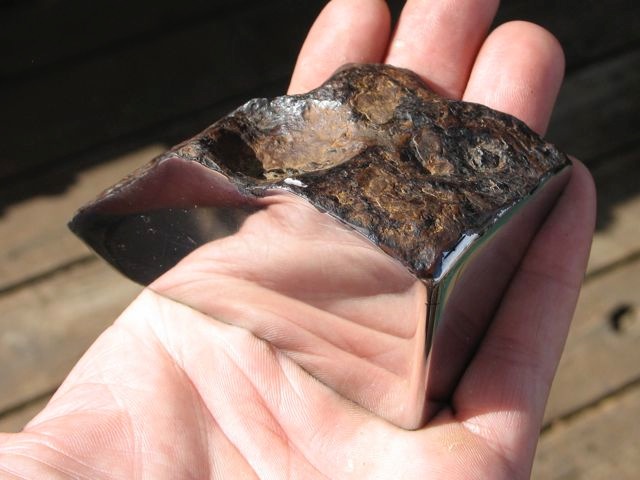
It is a picture of cutting the “Chinger meteorite” discovered in 1913 in the Republic of Tuva, which borders Mongolia, into four pieces and polishing the cut surface thoroughly. The contrast between the surface and the cut surface is very surprising.
The Chinger meteorite is an iron meteorite called “ ataxite ” containing 18% nickel. Currently, only about 50 meteorites classified as ataxite have been discovered and are considered rare.
Let’s take a closer look at the sides. It has a mirror finish so that the hand holding the meteorite is reflected as it is.

The contrast between the surface and the polished cut surface is amazing.


The edges are also very smooth.


It is a feeling that even fingerprints are clearly visible.

Iron meteorites with low nickel content are known to have nickel crystals called the Widmanstatten structure on the cut surface. Since areas with a lot of nickel and areas with little nickel are layered, it seems that even if you polish it, it will not become a uniform mirror like ataxite.
Also, there is this Bishamonten Buddha statue “Iron Man” which is famous for being carved out of the “Chinger Meteorite”. It is believed to have been made in Tibet in the 11th century.

Leave a Reply